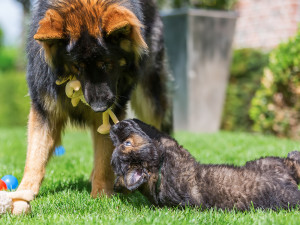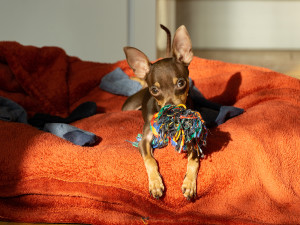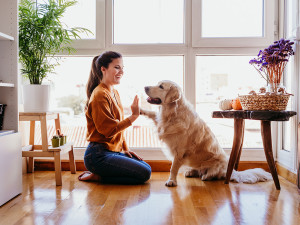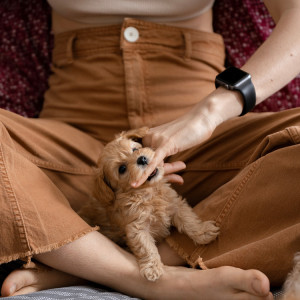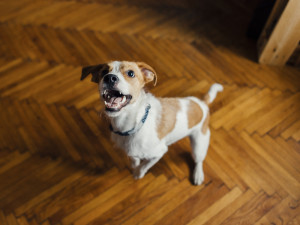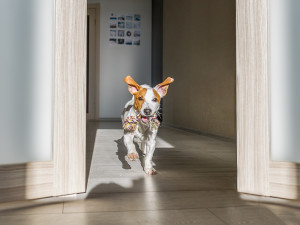“How Do I Get My Dog to Come When Called?”
Dog trainer Robert Haussmann’s tips for getting a stubborn pup to listen up
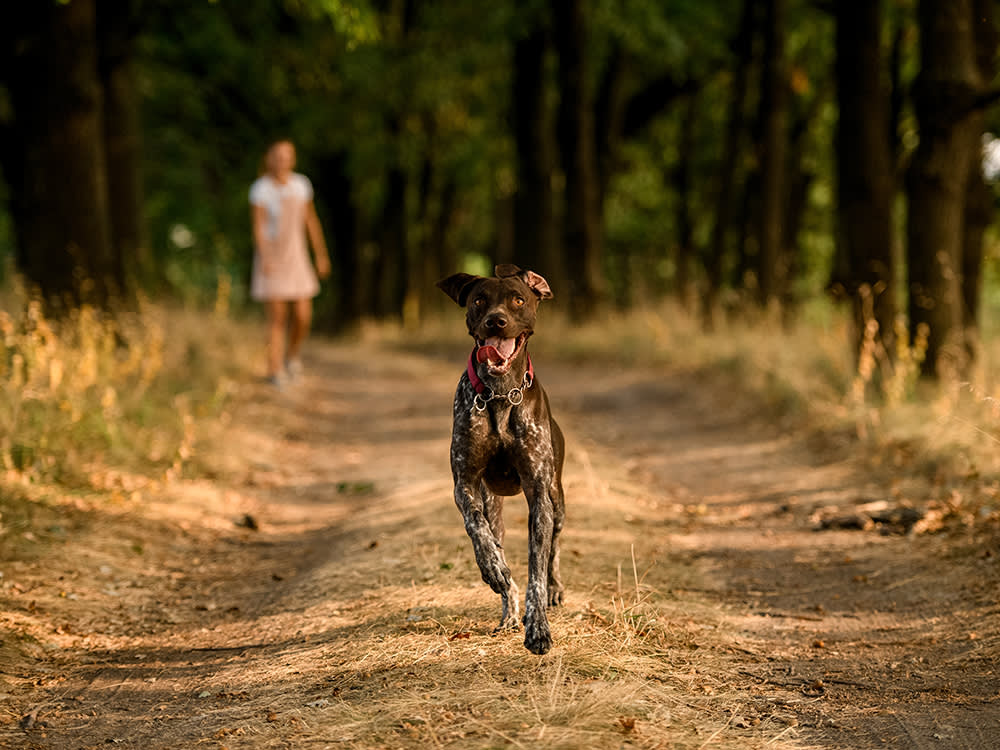
Share Article
Ranboo is a six-month-old German Shepherd puppy. I have had him for about four months now. He has selective hearing when it comes to responding to his name, with or without a treat. He never goes far, but he comes back to me on his own terms. How do I get Ranboo to come when I call him? – Christie
Congratulations on your new puppy! It’s very possible to teach an old dog new tricks, but it’s ideal to start as early as possible with a young dog. This way Ranboo will be a recall pro for life. For both your safety and his, getting Ranboo to come when he’s called is a training must-do. As you’ve already figured out, it’s not as easy as it sounds. But with time and patience, even the most stubborn pup can learn to come when called.

littleKin™ is Kinship’s home just for puppy and kitten parents. Bop over to check out expert advice, new pet tools, and special deals—all curated for your newest family member.
opens in a new tabSet him up for success
As with all basic training, you want to start where your dog can be successful. If you take Ranboo to the most challenging and complicated situation and ask him to learn a new skill, you’re setting him up to fail. He’s going to learn to ignore you.
People will often take their dog to a park and start calling the dog. The dog hasn’t learnt to come to you under those kinds of distractions, and they ignore you. If you chase after them to try to catch them, they think it’s great fun. When they finally listen and come over to you, you might put them on a lead, tell them they’re a bad dog and leave the park. So the dog says to themselves, “When I finally did listen, I lost the park.” This is a bad lesson for a dog to learn because they won’t want to come to you if they’re going to lose out on playtime.
Another common mistake people make is they practice the stay command and then call for their dog. You want to avoid this because it teaches the dog to be ready to break the stay at any moment, which doesn’t help your stay training. It also teaches the dog that they should be sitting still and staring at you before coming.
Set up the cue and start practicing
A six-month-old dog is just starting to hit adolescence and explore their own independence. It’s easy to run into problems if you’re inconsistent with training a dog this age, so be sure to control his environment and set a consistent cue.
You should start inside with no distractions and high value treats. You can stand in front of Ranboo and give the cue. It’s extremely important to keep the cue the same – if you say “Ranboo, come”, for example, that has to stay your cue. Not “Ranboo”, not “Come here, Ranboo” – it’s “Ranboo, come”. That’s it. Again, that’s just an example – choose a cue that works for you!
Make it fun
Say your cue and move back a few steps. Get excited about it. Treat it as a game instead of a command.
Give the command, move backwards by three to five feet, and give your dog a high value treat when he follows. Do that around the house for a little bit. Another game you can play is if you have more than one person in the house, you can call the dog back and forth across a room and eventually do this throughout the household, in different rooms.
You can even turn it into a game of hide and seek. If you have a house with kids, the kids and dog will both love this. You can go around doors or duck behind the countertop and call the dog until they find you in a new space.
Level up your location
Once Ranboo seems to have an understanding of the cue and he runs to you when you call him, you can go outside to a park or beach or open space. Again, don’t go straight to a park with lots of dogs, because that’s a challenging environment. You want to go somewhere peaceful where a dog can be successful.
I would invest in a 30-ft lead – or maybe 50, depending on the space you have. Bring him to a park where that’s not a lot going on. Put him on a long lead and let him wander and check things out at five or ten feet away from you.
If Ranboo is sniffing the ground ten feet away and you give a cue and he turns and pays attention, get excited. Tell him he’s good. Get low, clap your hands, run away a bit – do something exciting that makes the dog want to follow you. Punctuate that with a high value reward so the dog sees that coming away from the thing he’s exploring and coming to you is where the treat is.
Over time, you can increase the distance and increase the distraction. That might mean Ranboo is at the full length of the 30-foot lead and sniffing the grass or watching dogs play. This isn’t necessarily something you’re doing on a busy street; this should be somewhere where you have control over the environment.
For dogs who are really strong, you should be careful with a long lead so you don’t hurt your wrist or get your legs swept out from under you. In some cases, you can tether the dog to a tree or pole to make sure you’re not going to get hurt.
Get to the park
Eventually, you can go to a park that’s busy with dogs. Wait for the dog to have a moment when you feel that they can listen to you. For example, if I was at the park with my dog and she was engaged with three of her dog friends, I might wait a second. When she breaks off to the side to catch her breath, that’s when I would call her over to tell her she’s the best. I’d give her a treat or some water and a quick belly rub, then let her go back to play.

Robert Haussmann, CPDT-KA
Robert Haussman founded Dogboy NYC in 2005 to help pets navigate the urban jungle that is New York City using creative, practical, and humane training methods. Haussmann is a Certified Professional Dog Trainer and Canine Behavior Consultant, specializing in helping dogs overcome behavioral issues including fear, phobias, anxiety, and aggression. He advises owners on the best practices for making their dogs feel safe at home and beyond.
Related articles
![A woman holding a dogs paw and smiling.]() opens in a new tab
opens in a new tabNine Useful Tricks to Teach Your Dog
Go beyond the basics
![pet lover concept with mini dog on woman leg. sitting in room at home]() opens in a new tab
opens in a new tabWhat’s the Deal, Mouthy Puppies? Why Bite Inhibition Matters
How to teach your pup to play nice
![Dog barking]() opens in a new tab
opens in a new tabHow to Stop Your Dog From Barking
The top five reasons dogs bark – and how to help them to relax
![Dog looking out of a red half-door]() opens in a new tab
opens in a new tabHow to Stop Your Escape-Artist Dog From Making a Getaway
Dog trainer Pat Miller’s pro tips for preventing your pup from darting out the door
![Shiba Inu dog under a blanket, burrowing in covers]() opens in a new tab
opens in a new tabWhy Dogs Burrow Under the Covers (And Dig In the Bed)
What’s behind the desire to burrow and is it safe?
![Jack Russell Terrier Puppy zooming around with a toy at home.]() opens in a new tab
opens in a new tab6 Things to Know About Dog Zoomies
Not counting how fun they are to watch
